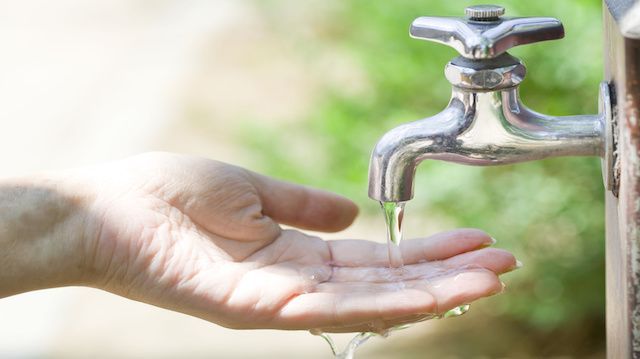
With the threat of global warming and climate change looming over us, we’re all trying to do our part to reduce our carbon footprint and become more environmentally responsible people. But while our attention is turned to the changes occurring in our atmosphere as a result of greenhouse gas emissions, there’s something a little closer to home that is being sorely neglected: water.
Water is life. All living things, including humans, rely on water to survive, and without clean sources of water we would quickly cease to exist. As the world population expands and the global percentage of freshwater remains at a scant 3 percent, clean water is increasingly becoming a scarce commodity. All the more reason why we should make some small but significant day-to-day changes now, while there’s still clean water to save.
Here are seven things you can do every day to conserve water and play your part in saving the planet.
Take a look at your water bills
If you get charged for water usage by your municipality, a good first step is to take out a few of your last water bills and work out how much you’ve been using on a daily, weekly, and monthly basis. Regardless of how much this is, you can use these as your baseline figures for indicating whether your water saving efforts are making a difference. It’s always good to know that your efforts are being rewarded, right?
Only turn on your dishwasher and washing machine when they’re full
Always make sure your dishwasher and washing machine are full before you put them on for a cycle. This will make the most efficient use of water, as these appliances generally use the same amount of water no matter how much they have in them. If your washing machine offers it, adjust the water level to suit the amount of clothes you need to wash.
If you’re in the market for a new washing machine or dishwasher, aim to get one that has a good Energy Star rating. This will ensure more efficient use of water and electricity consumption. It will also help with water conservation, and ultimately save you money.
Look for leaks in your home
A major way to cut back on water consumption in your home is to check for leaking plumbing or faucets. The best way to do this is to pick a time when your household isn’t using any water — for example if you go away for a weekend or on vacation. Before you leave, find your water meter and write down the number — when you return you can check the meter again and determine if there’s a difference. If the number on your meter has changed, you likely have a leak somewhere in your house, and the bigger the number difference the more serious the leak. Start hunting around for the leak yourself, or hire a plumber to check for you.
Install water-efficient showerheads and toilets
A whopping one-third of all household water use occurs in the bathroom, so this is an excellent place to focus your water conservation efforts. Toilets are the worst offenders for water consumption, so consider replacing your existing older toilet with a water-saving model that uses only one or two gallons per flush. If you have an overabundance of males in the house, you could even consider installing a stylish, discreet urinal in the bathroom — they’re considerably more water-efficient than regular toilets.
Another area of high water use is showerheads. Conventional showerheads typically pump out far more water than they need to, so it might be worth popping down to the local hardware store and investing in a low-flow showerhead.
Turn off taps when you’re not using them
This step is a simple one, but many people find it hard to kick this ingrained habit: leaving taps running while you’re brushing your teeth, shaving, washing hands or even washing your hair. You don’t need that tap to be running the whole time you’re doing these activities, so turn it off when you don’t! You’ll be surprised by just how much water you save.
Ditch the garbage disposal
Many people use water-glugging garbage disposal units in their kitchen to dispose of food waste. Not only does this place a lot of pressure on water treatment facilities, but it also churns through a lot of unnecessary water. Turn the tide by setting up a composting system in your backyard, where you can throw your food scraps and create your own rich soil for the garden. If you don’t have a yard, there are plenty of other ways to deal with your scraps in water-free ways, such as indoor worm farms!
Keep a bottle of drinking water in the fridge
If you’re a fan of nice, cold drinking water, consider allocating a glass bottle that remains in the fridge so that you always have cool water on hand. This will allow you to stop running the tap for an age until the water gets cold enough for your taste. We told you these steps were simple!
Passionate about helping the environment? Then you might find this article on the benefits of renewable energy interesting.
—Liivi Hess
Liivi is an Integrative Nutrition Health Coach and is training to become a doula. She inspires women to find peace and personal power by taking control of health and fertility naturally. Liivi‘s passion is ancestral nutrition and primal lifestyle design. She and her partner Will live between Toronto, Canada and Queenstown, New Zealand.

